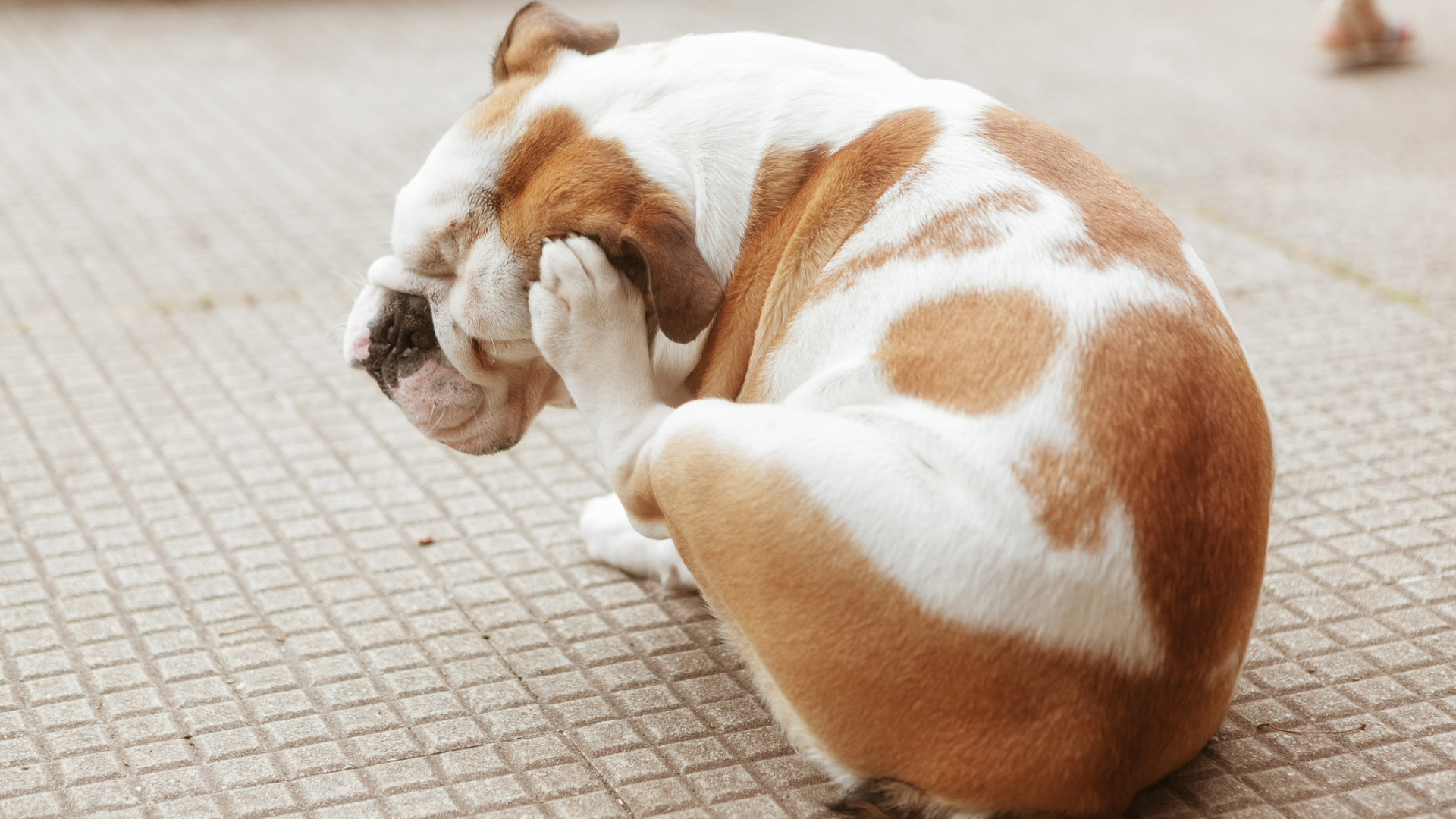
If you suspect your dog has an allergy, you are no doubt wondering how to help a dog with allergies. You might see your dog itching, chewing their paws, or they might have loose stool or red skin. They may also have recurrent ear or eye infections, and be losing fur.
Allergies can be sparked by many things, including changing seasons, pollens, dust, fragranced products around the home, or the food the dog is eating. As someone living with a dog with allergies, you may need to take practical measures such as changing the products you use in your home or swapping your dog’s diet over to one of the best dog foods for allergies.
While certain breeds are more prone to allergic reactions, all dogs are susceptible to them. We spoke to vet Dr Katie Ford to find out how to tackle the problem and help a dog with allergies.
Allergic conditions can manifest in various forms. Katie says the most common allergic conditions she encounters include skin allergies (atopic dermatitis), food allergies, and flea allergies.
She says: “Environmental factors such as pollen, dust mites, storage mites or molds can trigger atopic dermatitis. Allergies to certain foods can also cause skin or gastrointestinal signs. Flea allergies, as the name suggests, result from a hypersensitivity to flea bites. Some patients will have multiple allergies and need a multimodal approach to treatment.”
Here are some steps you might want to take:
1. Get a professional diagnosis
When you first notice any signs of an allergy in your dog, you may want to start making changes yourself before visiting a vet. However, as Dr Ford says: “Allergies can be complex, and can be flared up by a number of factors.”
Vets can delve into the reason behind your dog’s allergies so you can get on top of it quickly.
Katie notes that as veterinary teams, “we have the ability to perform further tests and work with clients to ensure we are treating their dogs in the most effective way and for the right thing.
“It can be really beneficial to form a partnership with your veterinary surgeon, getting to know what helps your dog in the longer term in times of management, and when additional support might be required.”
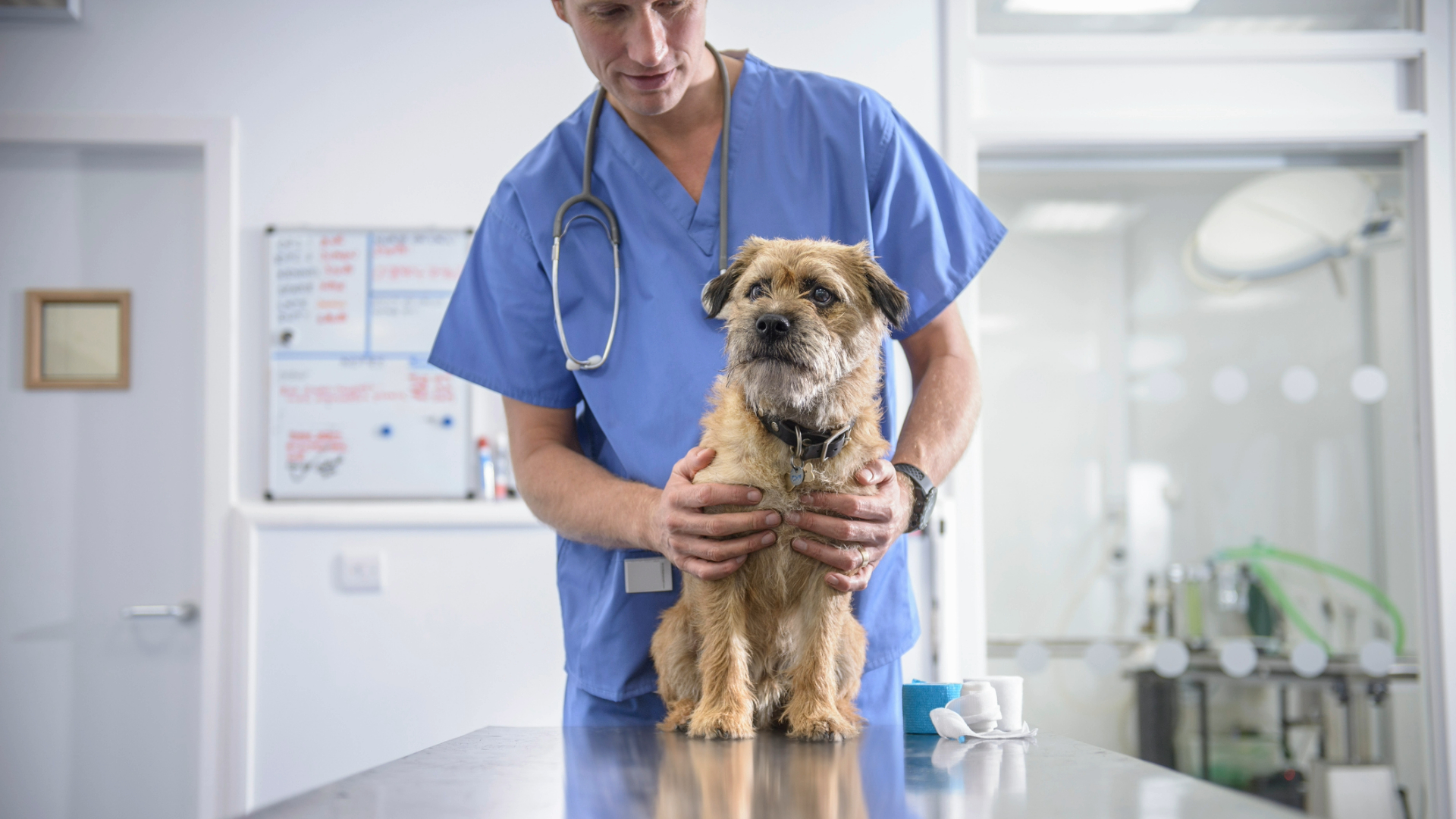
2. Get an allergy test
Once a vet has considered the dog’s individual situation - including their medical history, age, breed, and the environment they live in - initial investigation might be taking samples of the skin, and checking for bacteria, fungi, and parasites.
As Katie notes: “Identifying the exact allergen can be challenging, but tests include intradermal skin testing or blood (serum) testing. Your vet will be able to explain the pros and cons of each test, and what is on offer at their clinic or at specialist centers.”
It can be worth checking with your insurance company that they cover any tests before they’re carried out.
3. Is it time to change your dog’s food?
What our dogs eat is an increasing area of interest. There are now so many choices, not only in the type of food you are feeding (for example, kibble, home-cooked, or raw) but also in the specific ingredients these contain. If you think your dog’s allergies are linked to food, it’s important to consider whether changing dog food is the right first choice for your dog.
Katie says that if food is suspected as a cause of allergy, then “an elimination diet is a great place to start. There are a few different options that your veterinary team will explain and help you to understand the options. This may involve feeding a new protein and carbohydrate source for a set time period, often eight to 12 weeks.
“Ideally, this would be food types your dog hasn’t eaten previously, and without treats or extras along the way. This might be a commercial food or home-cooked.”
Alongside a change in food, Katie says: “Veterinary fatty acid supplements can help support skin health [...]. There are many available that are balanced and specifically for dogs with skin allergies."
However, she notes that “it’s crucial to consult your vet before adding any supplements or making significant changes to your dog's diet (especially if they’re on a diet trial or have sensitive stomachs).”
If you want to level up your nutrition knowledge, here are six nutrition myths busted by a vet.
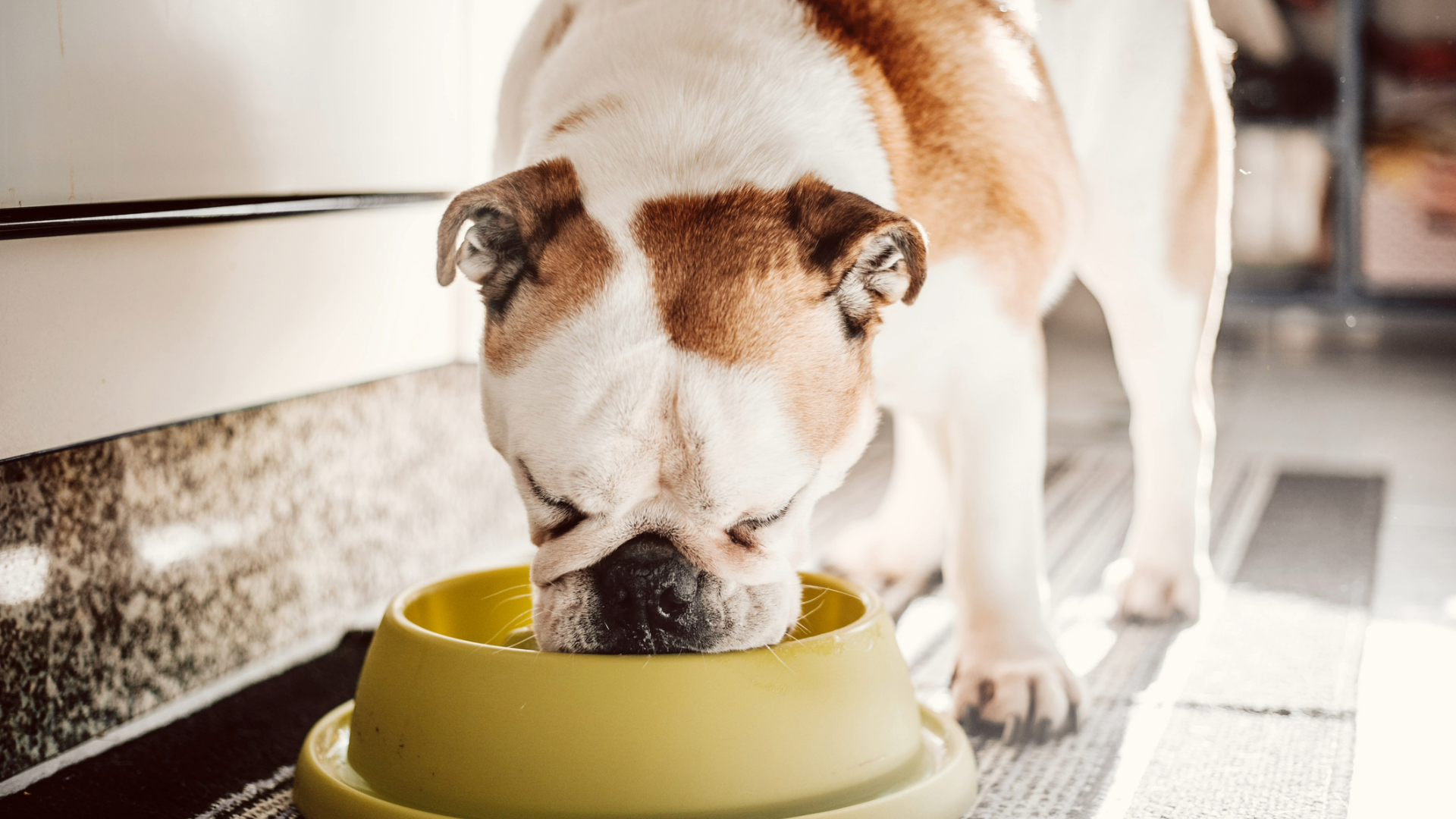
5. Bath or wash your dog’s paws
Washing your dog can be especially useful when seasonal allergies are suspected or you know your dog is allergic to certain pollen.
Unfortunately, many dogs hate baths but you can work on slowly building up your dog’s confidence getting into the tub and how comfortable they feel in the water. Wondering why do dogs hate baths? Our guide is here to help.
In the short term, “rinsing paws after walks can remove pollen particles attached to the skin”, says Katie.
Minimizing contact with any known allergens can also be useful. So, if you know that your dog struggles in the grass during particular months, you might swap your regular walk route out for different locations, such as sidewalk-only walks or a hike in the forest.
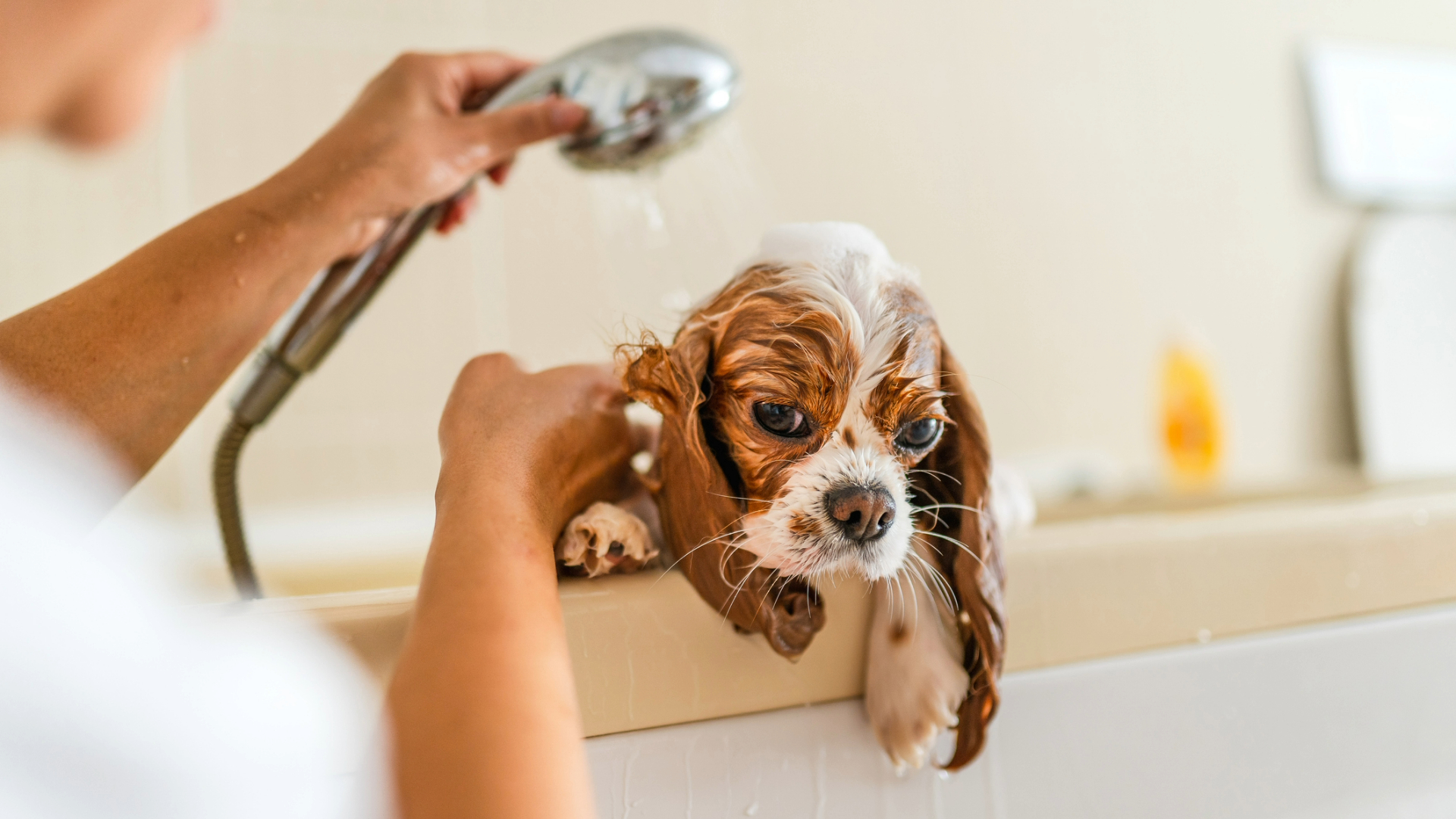
6. Clean your home
For dogs with allergies related to dust mites, keeping your home as free from dust as possible is going to be really important.
Katie says: “You can minimize dust mite allergen exposure by regularly cleaning your dog's living environment (don’t forget the car!)”
Vacuum regularly and wash any bedding with mild detergent. Air purifying machines might also be worth investing in if your dog really struggles with dust.
Katie reminds us to be especially aware of times that “disturb dusty areas, and keep pets out of the way if this is the case. For example, bringing seasonal decorations down out of the attic or when having any renovations.”
7. Avoid bulk-buying dry food
Storage mites can be cause for concern for some itchy dogs - this can be especially problematic if you feed a kibble-based diet and buy it in large quantities.
Katie says: “Storage mite exposure can be reduced by avoiding stockpiling food, as they can live in dry food, particularly in the dust at the bottom of the bag. Storing dry food in airtight containers can be valuable, and some find benefit from freezing portions of dry food before use.”
8. Keep things natural when it comes to home fragrance
While as pet parents we’re always keen to avoid doggy odor in our homes, if your dog has signs of allergies, you’ll want to avoid any harsh cleaning products or unnatural fragrances.
Carpet cleaners or freshening powders should be avoided, alongside plug-in or spray odor-fighting room fresheners. These can not only irritate the skin but may settle on your dog’s fur or paws and be ingested during self-grooming sessions. If your dog is highly allergic, it is worthwhile avoiding any form of scented products - even candles.
9. Use natural grooming products
When bathing or grooming your dog, make sure the products you are using are pet-safe and soothing for the skin. Katie suggests that we should make sure “grooming products aren’t heavily fragranced and that they are suitable for sensitive skin.”
Speak to your groomer to make sure they’re not using any sprays or shampoos that might irritate your dog’s skin or cause a flare-up of their allergies.
10. Don’t forget your dog’s emotional well-being
Whilst we can get focused on the physical impact of allergies, many itchy dogs can also be struggling emotionally. As a behaviorist, I see many of my anxious dog clients also complain of allergic conditions. Whether they’re in pain, feeling fed up, or the inflammation from the allergic condition is causing their body overall stress - make sure you are helping them feel as comfortable and confident as possible.
We can work with vets to help suppress the physical response, but you may need some support from a force-free positive reinforcement trainer or behaviorist to guide you through ways to boost your dog’s mood. Try and add activities that your dog really loves to do throughout your week together - be that sniffing, playing, or having cuddles with you.
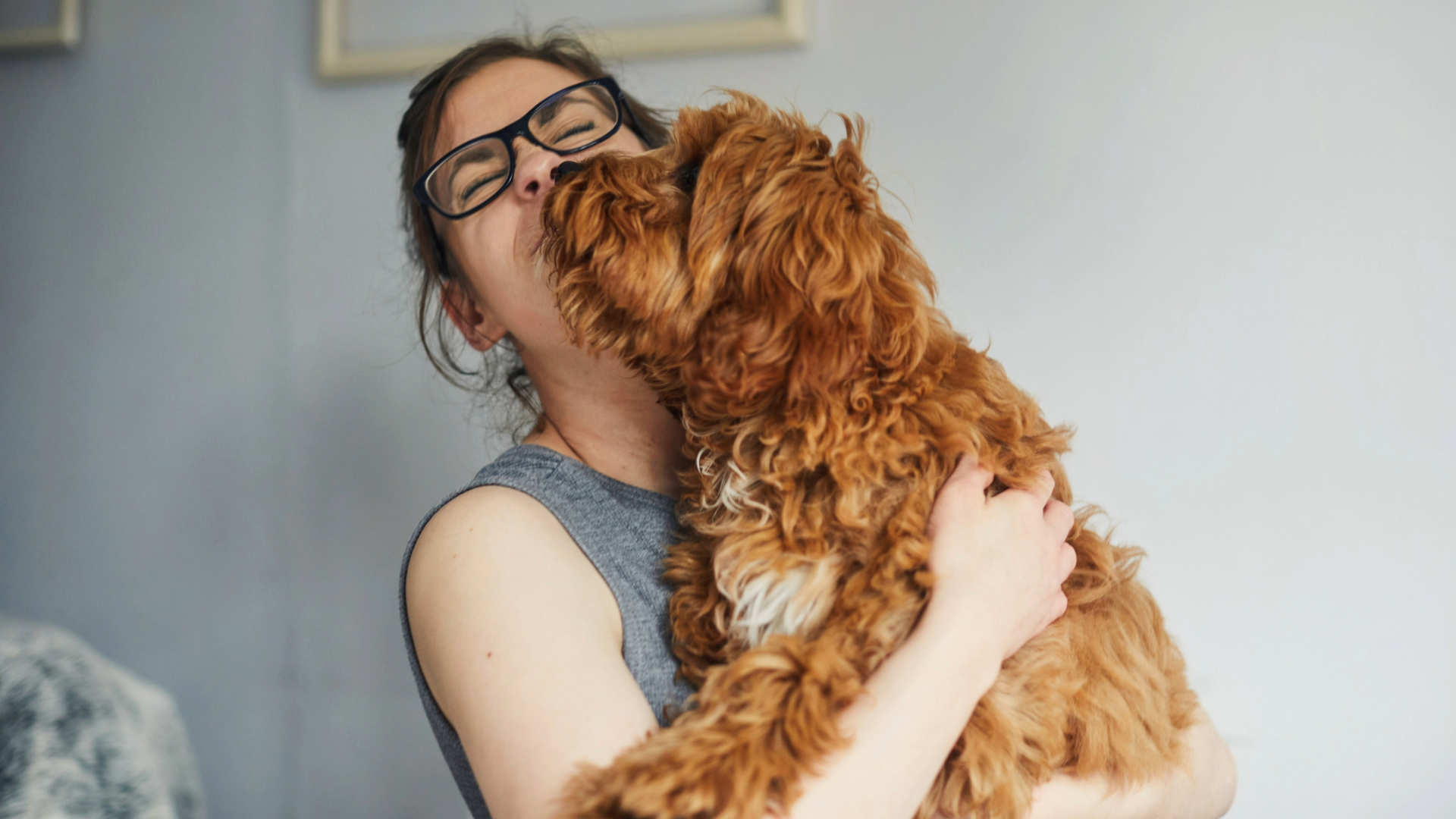
If your dog is showing signs of an allergic condition it’s important to get help as soon as you can. Ultimately, when you’re looking for the best ways to help a dog with allergies, make sure you are utilizing professionals for support and delve into every area of your dog’s lifestyle and environment to find the cause quickly.
Want more tips like this? Here are the five signs of dog allergies and the three common food allergies in pets. We’ve also collated a further nine tips for coping with allergic pets.







